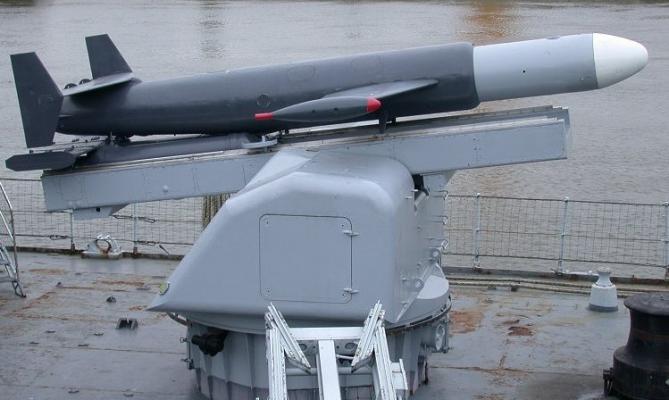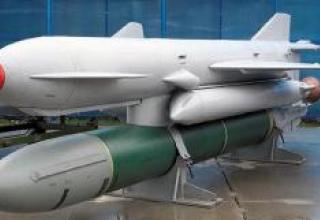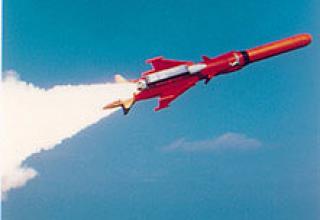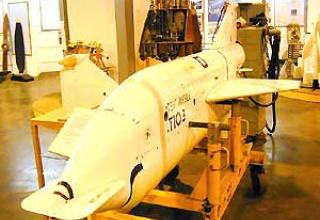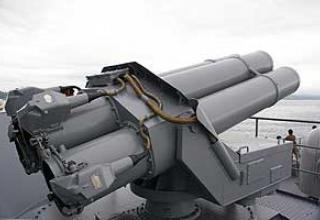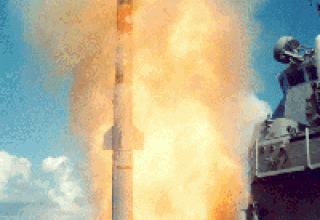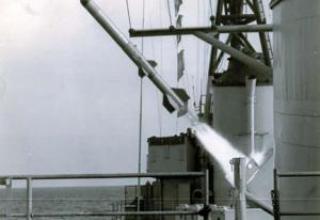This complex is in service with the French Navy surface ships. It differs from the famous Asroc anti-submarine complex mainly in that it is equipped with a guided missile launcher designed for only one torpedo carrier cruise missile. The development of this complex was carried out during five years from 1960 to 1965, after which it went into mass production.
It was not widely distributed, it was equipped with only a few squadrons of different types of destroyers in the French Navy.
Composition:
The Malafon complex consists of a cruise missile carrier with an anti-submarine, acoustic, self-guided torpedo as its warhead, a launcher, a ship hydroacoustic station and a radio command system to control the missile's flight in the air. Winged missile, created by the aircraft scheme, has a trapezoidal wing with ailerons and three-kilovym tail feathering at the first releases (Mk-1), 1 two-kilovym feathering at later releases (Mk-2) and rudders of altitude. Steamed solid fuel jet engine installed in the tail of the glider on an articulated suspension.
The combat unit is a French electric acoustic homing anti-submarine torpedo L-4 of 533 mm caliber. Its speed and range are close to similar characteristics of the American Mk-44 torpedo. Its speed is 30 knots, range is 5 km, weight is 525 kg (instead of 198 kg), explosive weight is 100 kg (instead of 40 kg). The torpedo is two thirds of its length is included into the rocket body.
The launch vehicle of the ramp type has a single guide. The total maximum missile elevation angle is 20°, the mass of the launcher is 10.5 t, the mass of the whole complex is 22 t. For storage of 13 rocket torpedoes there is a cellar with dimensions 11,5x12,0 m with the supply system.
The coordinates, course and speed of target movement are determined by the computer based on the data of the ship's hydroacoustic station. The launch is carried out with the help of two sub-basement solid-fuel launch accelerators separating after the missile launch. On the active section of the trajectory, which is equal to one third of the path, passed by the rocket-thorpedo in the air, the flight is carried out according to a given program using the program control system. At the design point, the rocket engine is separated and the torpedo rocket continues its planned flight, stabilized by autopilot. The flight height is kept constant (about 100m) and controlled by a radio altimeter. Control commands providing correction of the flight path are transmitted to the rocket via radio channel. In the target area, at a pre-calculated point within 800 m of the target, the radio command from the ship opens the brake parachute, slows down the flight of the missile and the torpedo inertia is separated from the missile and enters the water. The motion of the torpedo in the water is further controlled by the torpedo's homing acoustic system, which ensures the search for the boat.
Due to the considerable weight and overall dimensions of the Malafon complex, short range and speed of the combat unit (torpedo), this complex, according to foreign naval experts, does not belong to the best samples of anti-submarine guided weapons.
Characteristics:
| Range maximum, km | 18 |
| Range minimum, km | 2 |
| Rocket diameter, m | 0.65 |
| The length of the rocket, m | 6.15 |
| Wingspan, m | 3.3 |
| Number of steps | 1 |
| Flight Speed, m/sec. | 140- 200 |
| Maximum height of trajectory, m | 230 |
| Launch weight of the rocket with a torpedo,kg | 1480 |
Testing:
Terms of development of the M-1 complex were ahead of the terms of delivery of the head ship at Prospect 61 of Plant № 1701 (SKR-25 from 9.10.62 "Komsomolets of Ukraine") - so the Order of the USSR CM № 2110 of 30.07.1959. joint tests of M-1 were transferred to the rocket ship "Bravy" pr.56K. Tests on "Bravo" were held in two stages - from 5.01.62 to 12.03.62 and from 12.03.62 to 30.04.62. During the tests it was noted that the time of "Yatagan" exit from the cold position was 5 minutes, the range of "Yatagan" escorting the target was 42 km with a 50% probability of capture and 36 km with a probability of 80%. The missile's range was 15 km, and the self-destruct time was 26 seconds.
During the tests of the complex was shot down six target aircraft MiG-15M, flying at an altitude of 0.6 to 10 km, with missiles missed from 9 to 48 meters. According to the commission, the probability of hitting the aircraft at a miss of 20 meters is 0.9, while at a miss of 40 meters - 0.4-0.6. The M-1 complex could hit targets flying at a speed of up to 600 meters per second. The target can maneuver at altitudes up to 4 km with an overload of 3 - 4 g, and at high altitudes - up to 2 - 3 g. The speed of the ship during launches can be up to 36 knots. There was no firing from Bravoi on surface targets.
According to the results of tests on "Bravoi" the M-1 SAM system was recommended for adoption for service.
